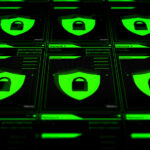
Initially, many organizations deployed virtual private networks (VPNs) to maintain data security while everyone worked from home. However, the U.S. Department of Homeland Security (DHS) Cybersecurity and Infrastructure Security Agency (CISA) warned in an alert that enterprise VPN utilization could lead to data breaches without patching, updates, and multi-factor authentication (MFA). Supplier errors also pose a threat, as evidenced by security incidents involving free VPN platforms that have potentially exposed the personal information of millions of end users, according to Malwarebytes.
Ultimately, one type of technology emerged as the best possible solution to the pressing problem of ensuring secure access for remote workers: zero-trust network architecture.
What Is Zero-Trust Architecture and How Does It Work?
Essentially, zero-trust solutions take the idea of regarding any entities outside your network with skepticism and extend that to everything inside the network as well, according to the CSO article “What is Zero Trust? A model for more effective security.” Anyone seeking access to any resource must have their identity and permissions verified first.
A zero-trust network carries out micro-segmentation and granular perimeter enforcement based on user characteristics (e.g., permissions, role and location) to give people access to only the resources they need to do their jobs, according to Palo Alto Networks. This makes it much more difficult for bad actors to get their hands on sensitive data.
“Based on the principles of verify explicitly, use least privileged access, and assume breach, a comprehensive Zero Trust architecture creates safeguards within and across identity, endpoints, apps, infrastructure, network, and data, partnered with increased visibility, automation and orchestration,” wrote Vasu Jakkal, corporate vice president of Microsoft Security, Compliance and Identity, in the supplier’s 2021 Zero Trust Adoption Report. “We not only recommend this approach with our customers and partners, we embrace it in our approach to global security and software development here at Microsoft.”
The Reasons Behind the Rising Zero-Trust Adoption Rate
Based on surveys and interviews of over 1,200 security decision-makers, Microsoft found that nearly all (96 percent) of those surveyed identify zero-trust as critical to their company’s success. The vast majority (90 percent) of security decision-makers reported familiarity with zero-trust, and 76 percent say their organization is either in the process of implementing the framework or has fully adopted it.
The Zero Trust Adoption Report identifies the following as the main motivating factors for implementing a zero-trust framework.
- Enhancement of overall security posture (47 percent of survey respondents)
- Better end user experience and increased productivity (44 percent)
- Transforming security team collaboration (38 percent)
- Simplifying the security stack (35 percent)
- Lowering security spending (35 percent)
The shift to hybrid workplace arrangements is also a significant factor driving zero-trust framework adoption, with 81 percent of enterprises reporting they’re either in the progress of going hybrid or have already completed the transition.
“Because secure remote and hybrid work can be aided by Zero Trust strategy, COVID-19 has accelerated adoption of a Zero Trust strategy
for 72 percent of organizations, although asymmetries emerge between markets,” the report states.
Additionally, many cyber liability insurance providers are ramping up their requirements for clients as security threats continue to evolve: For instance, for most insurers, MFA is now a must if you want coverage. Zero-trust adoption can help your organization maintain optimal security posture and qualify for coverage.
Achieve Secure Remote Access With A Zero-Trust Framework
With hackers continuing to bombard businesses of all sizes with ransomware attacks, phishing attempts and other varieties of cybercrime as hybrid workplaces become commonplace, adopting a zero-trust approach makes a lot of sense. We’ve helped many of our clients implement secure remote work strategies with Stratosphere Office Anywhere, which leverages a zero-trust framework with a secure access service edge (SASE) to provide a secure and unified end user experience. Key features and benefits include the following:
- A single, unique and secure user identity that allows end users to log in from any device
- Policy enforcement that only gives users access to the resources they need to do their work
- Unlimited scalability
- BYOD device security
- End-to-end encryption
- MFA
This zero-trust framework can also integrate with Microsoft 365 identity management and Azure Active Directory.
Our team has extensive experience implementing and managing our zero-trust solution, and we can answer any questions you might have about this type of technology and whether it’s a good fit for your organization. For details, connect with us today by calling 877-599-3999 or emailing sales@stratospherenetworks.com.


